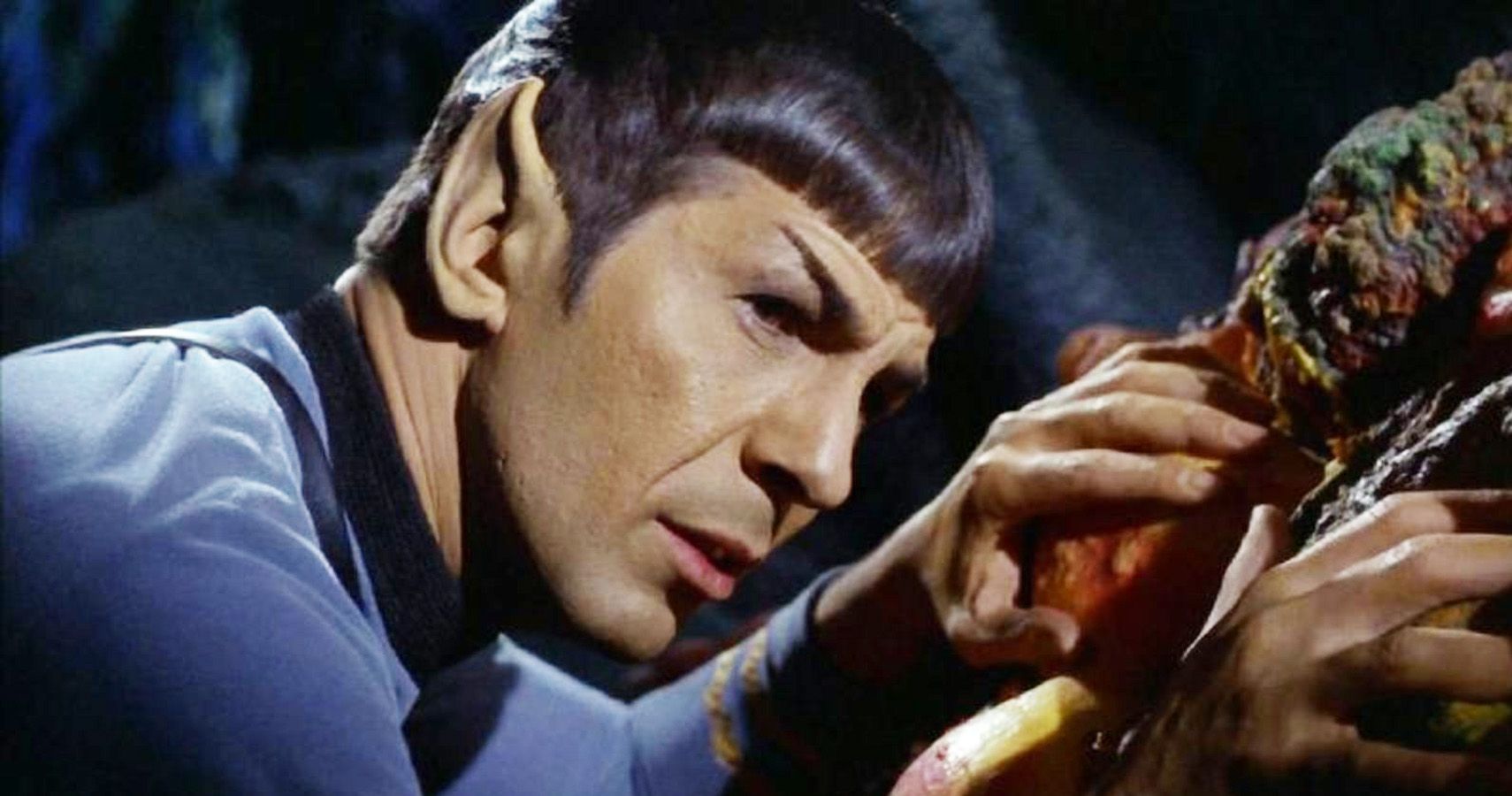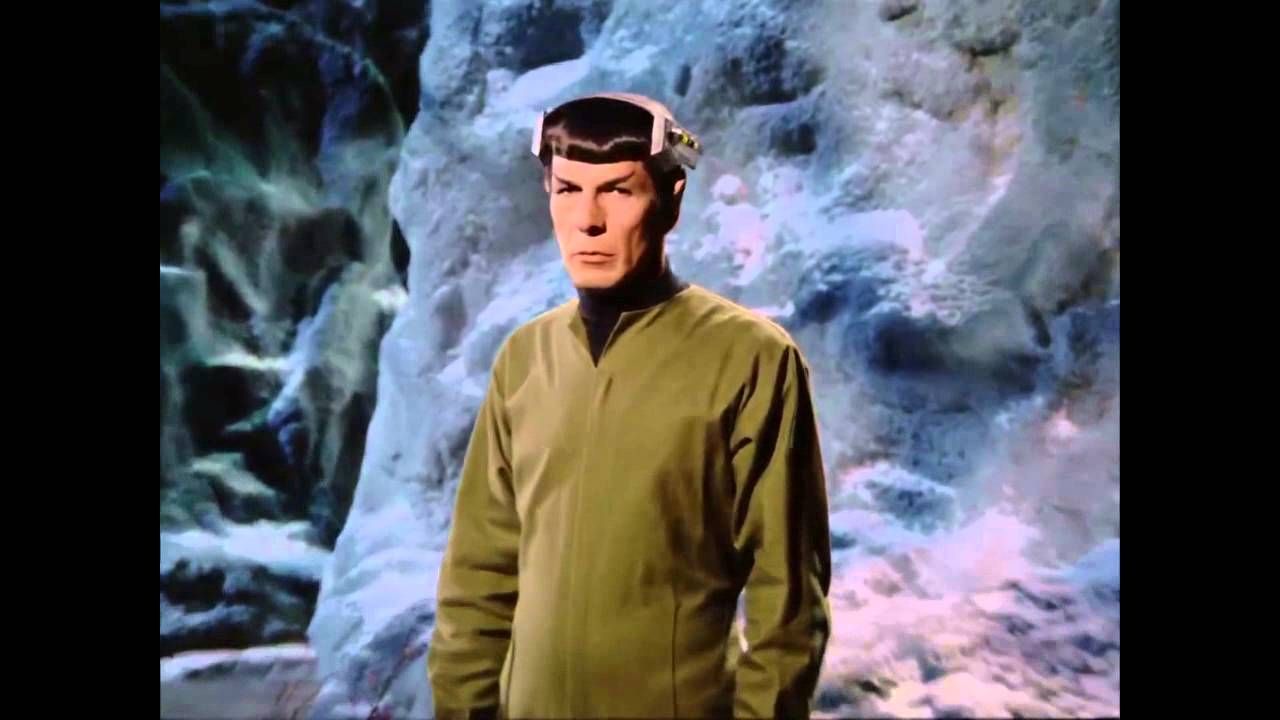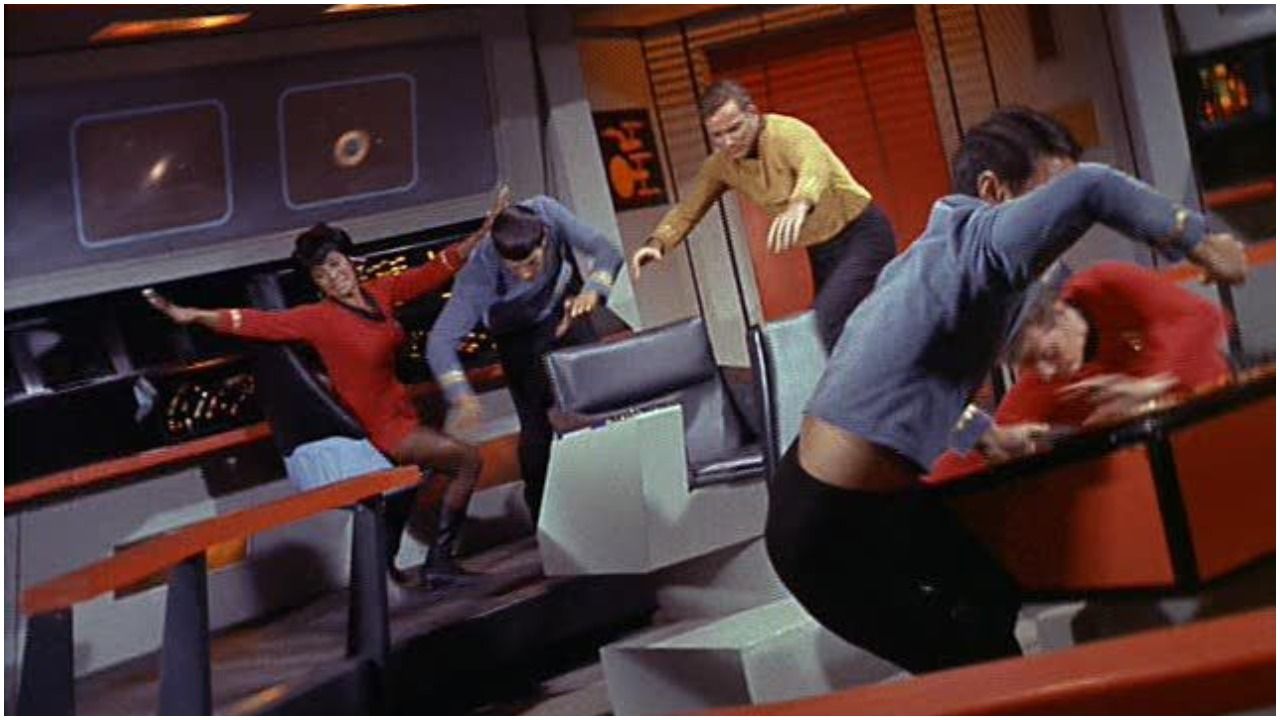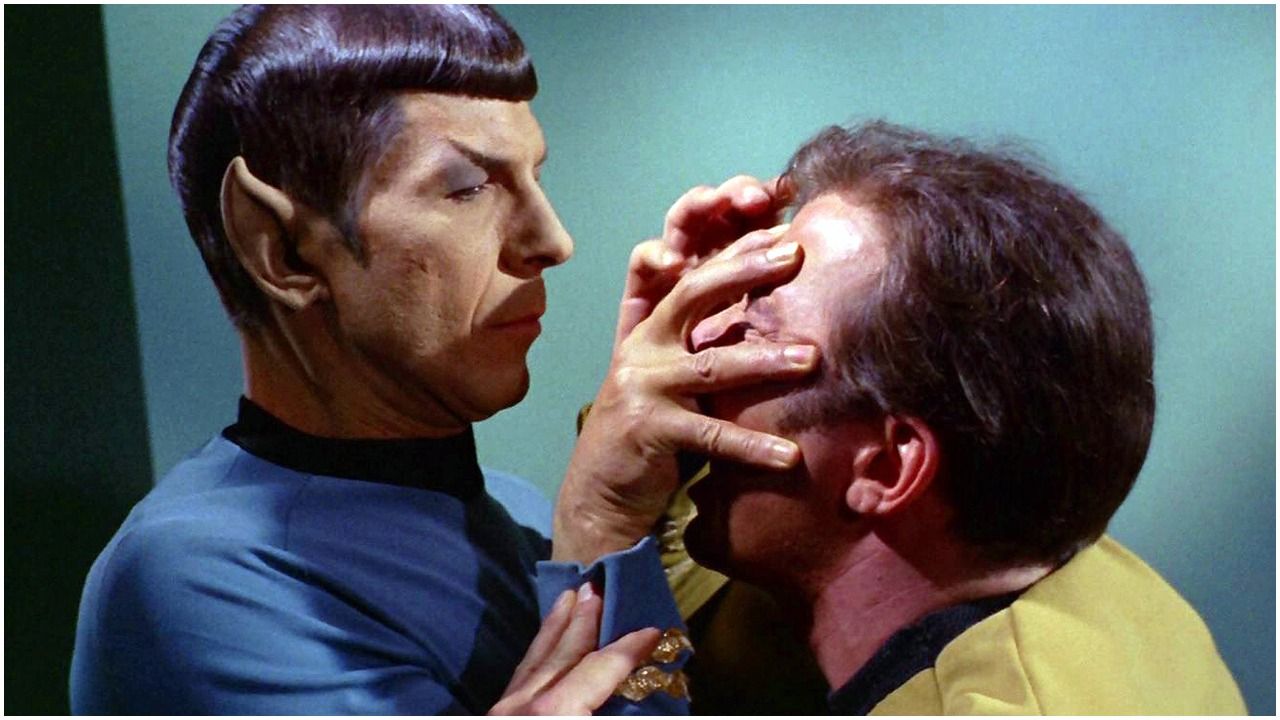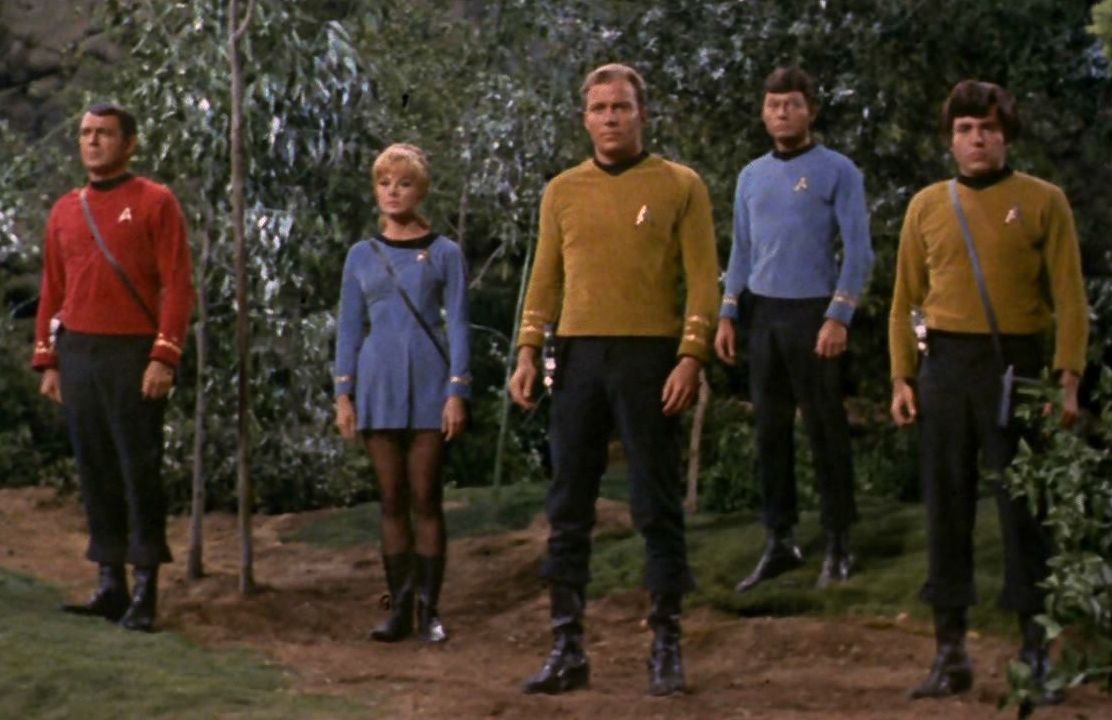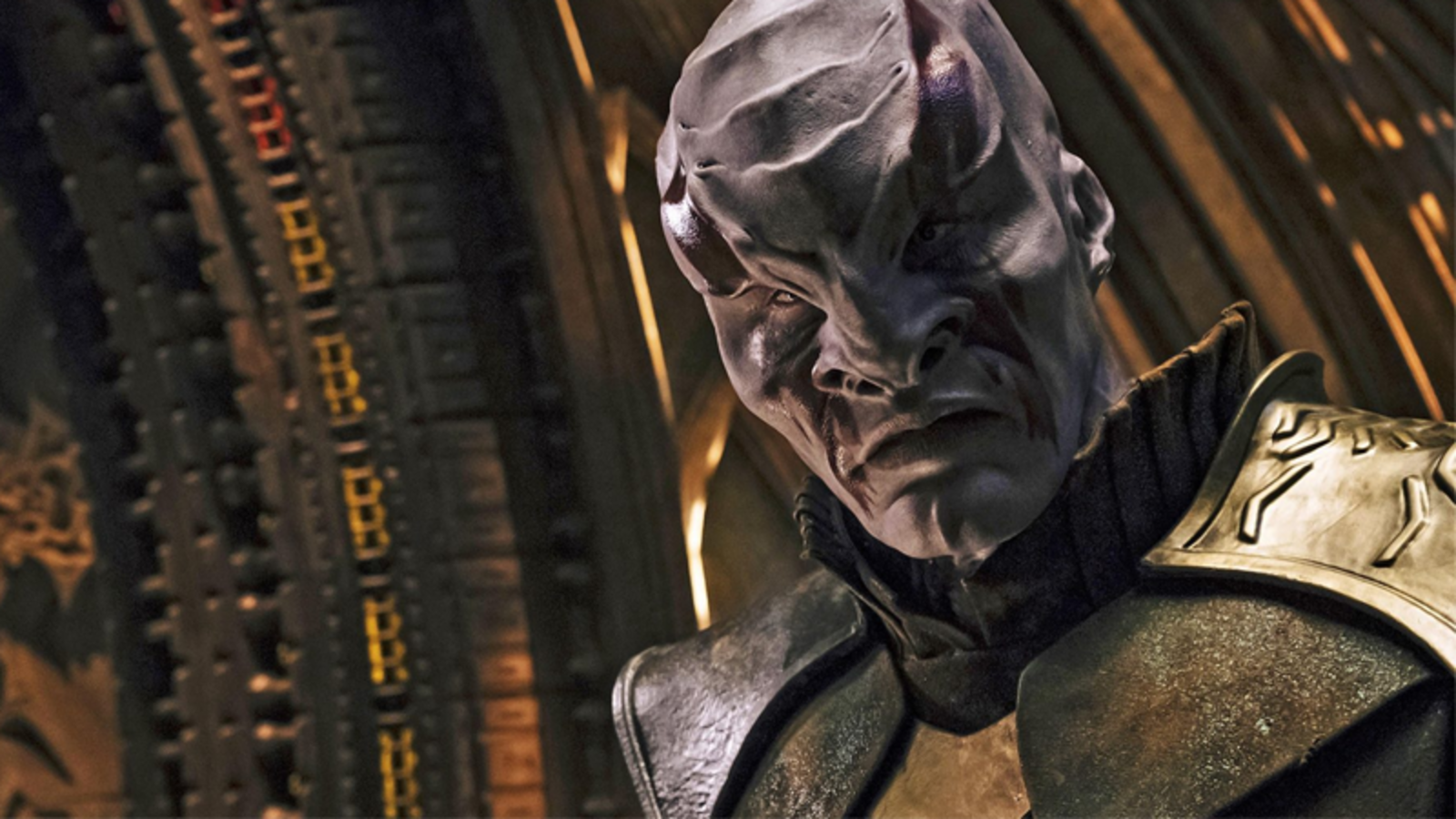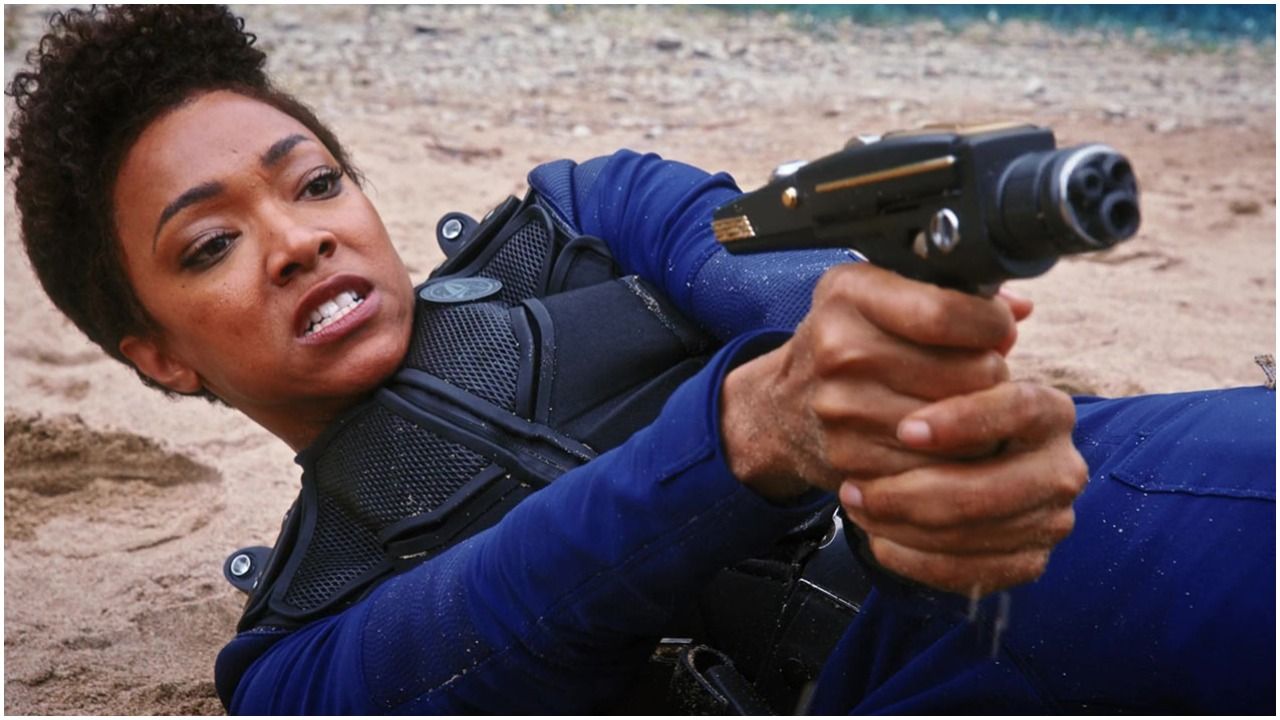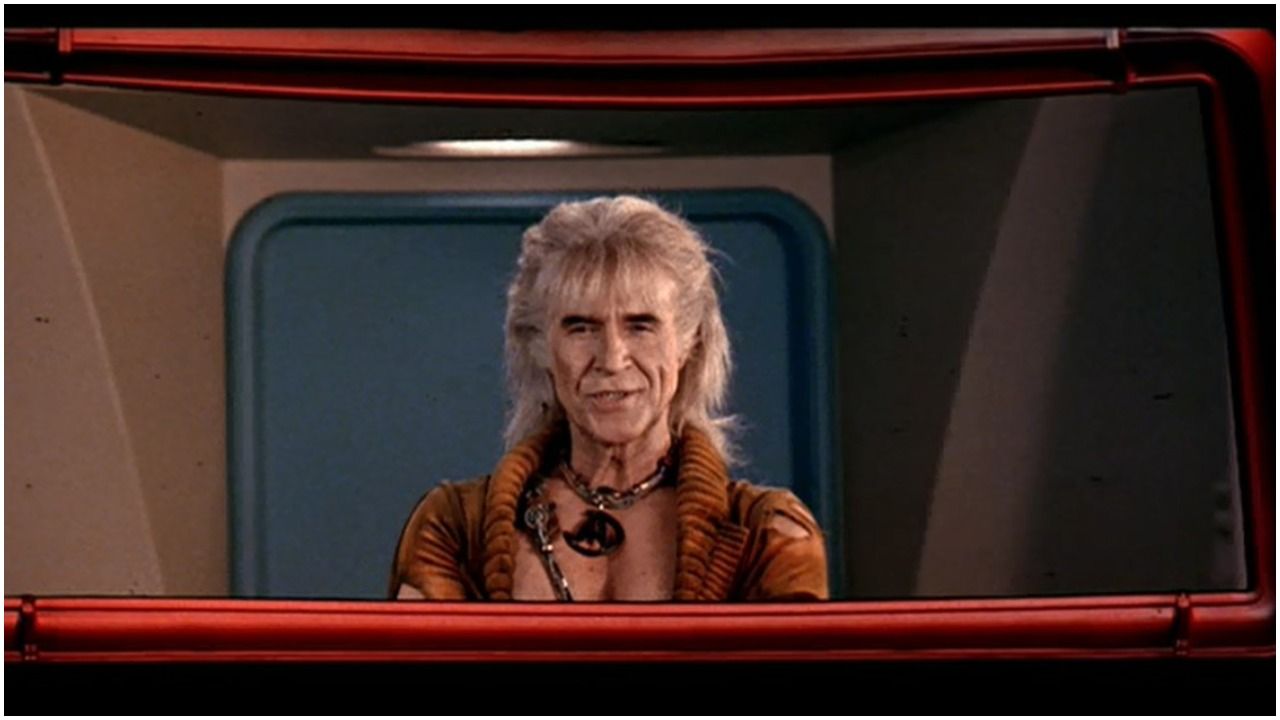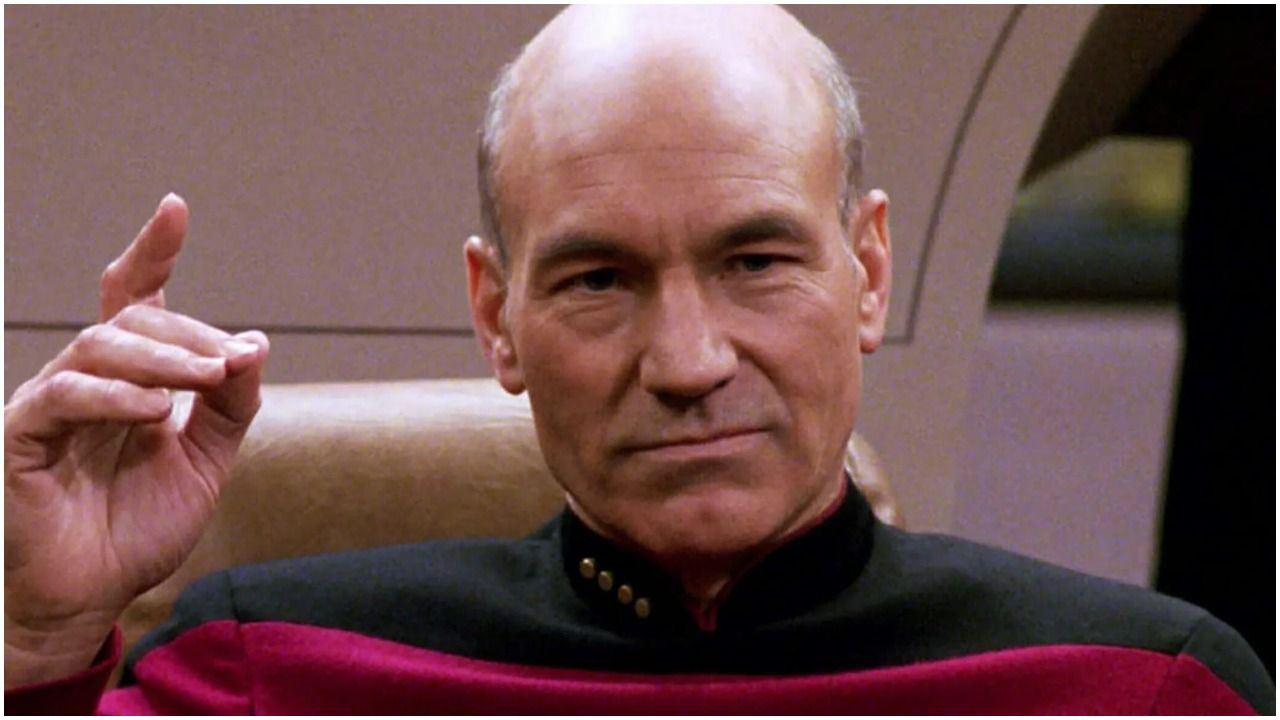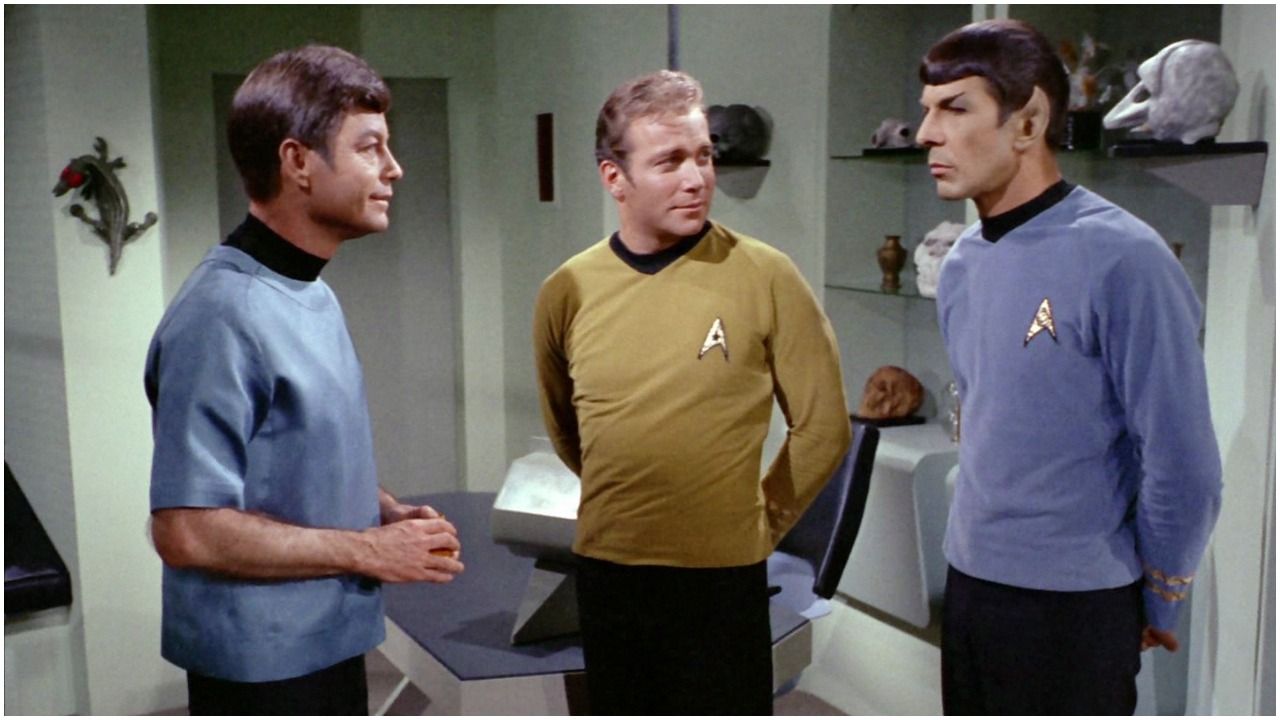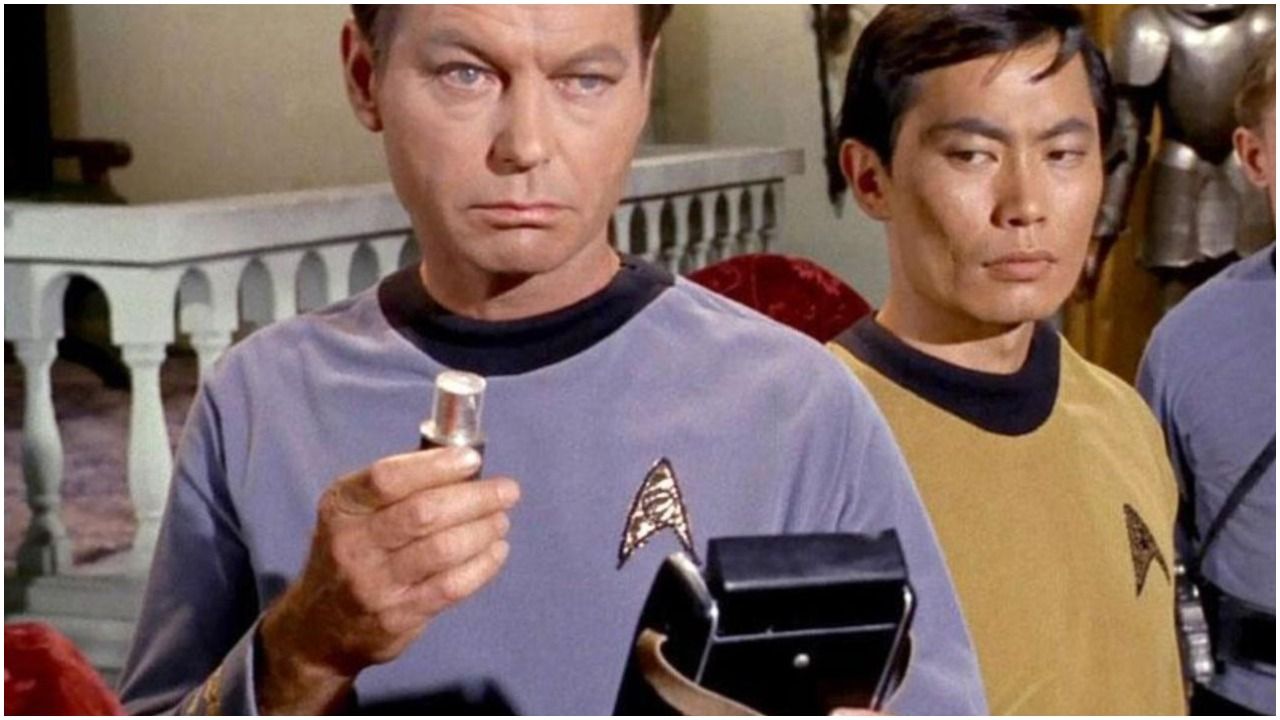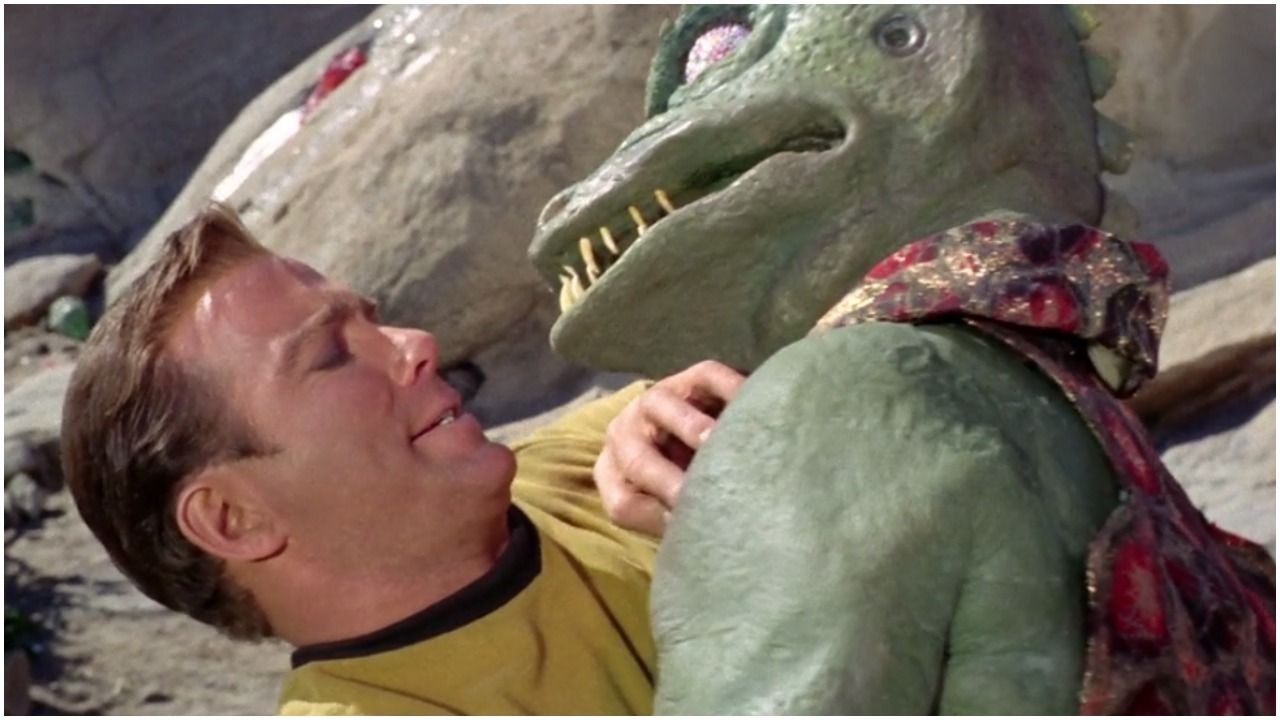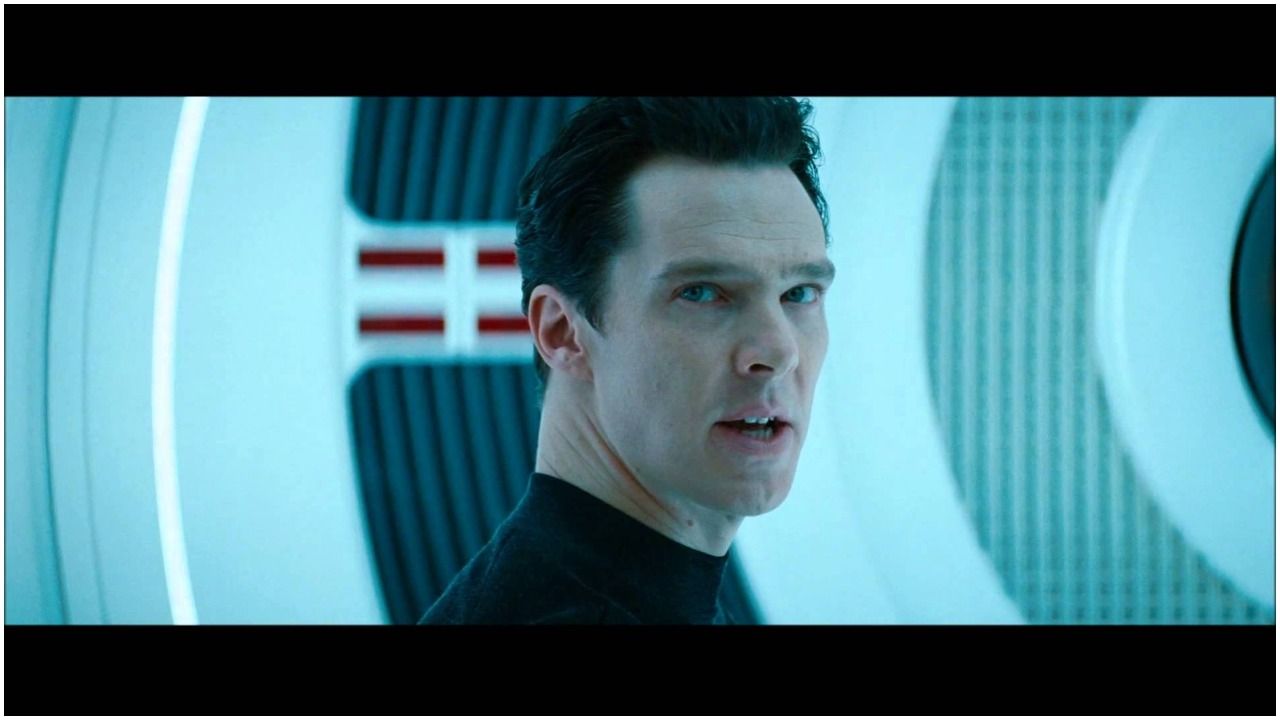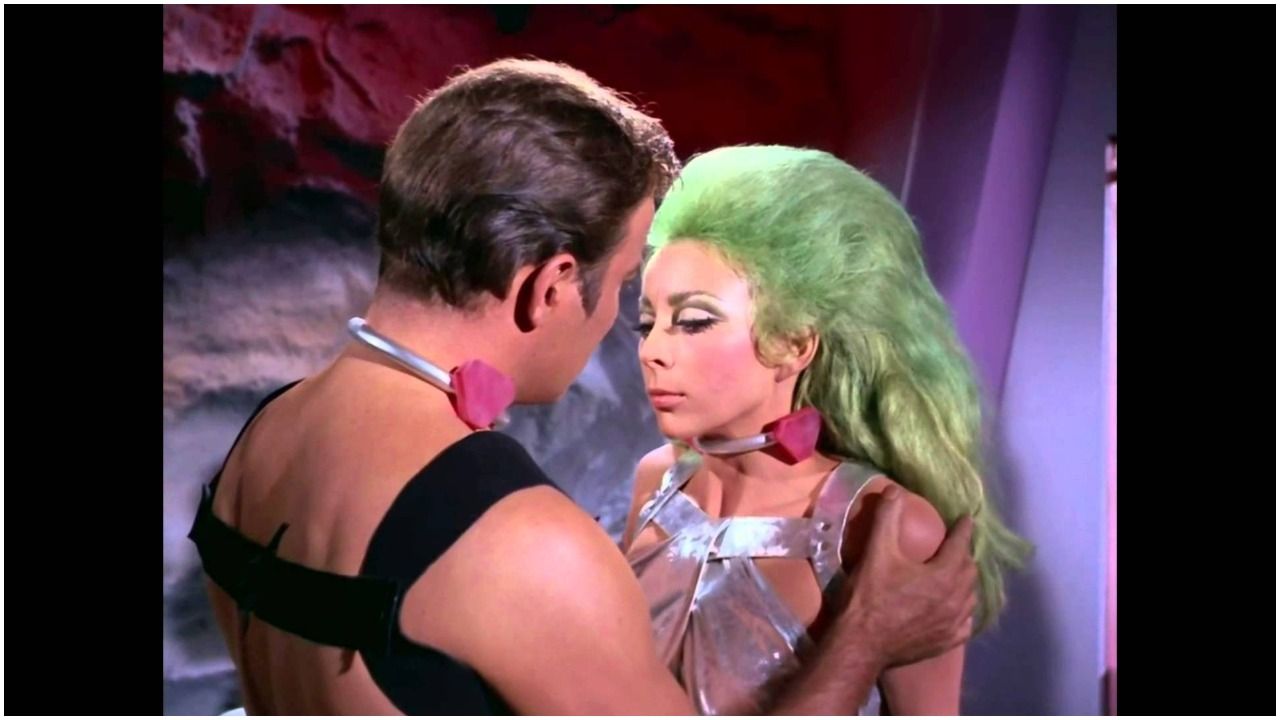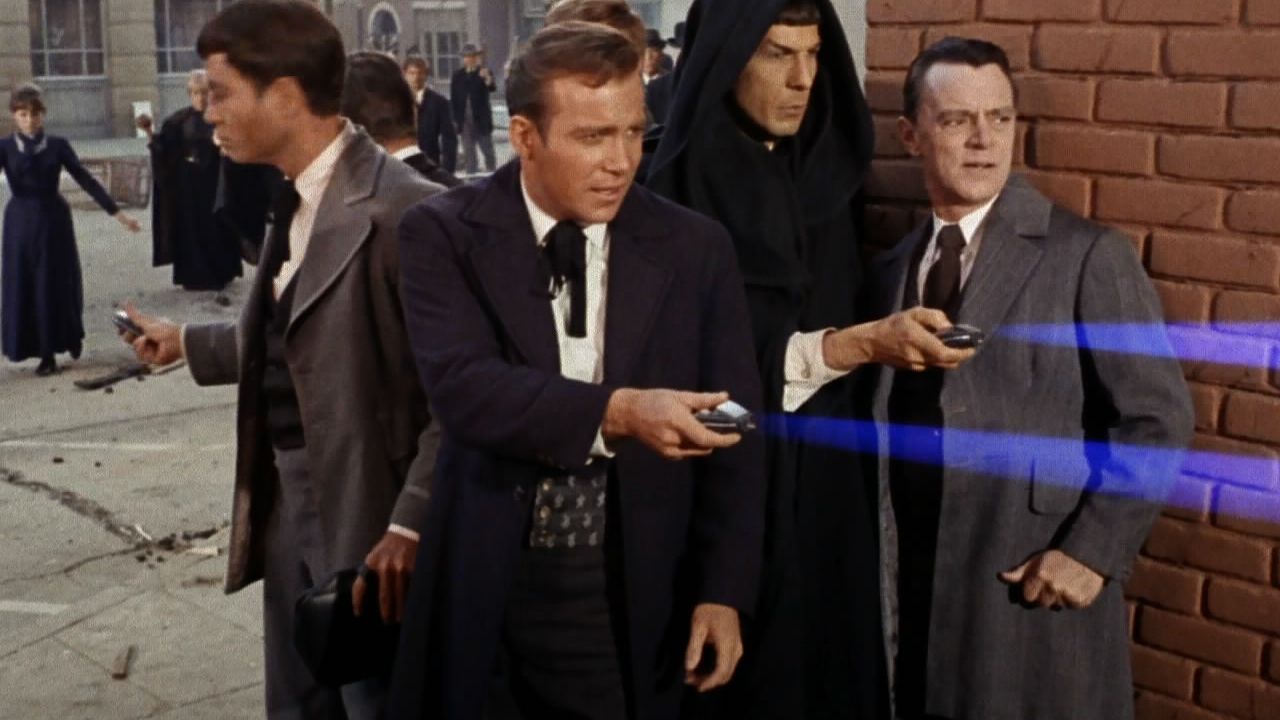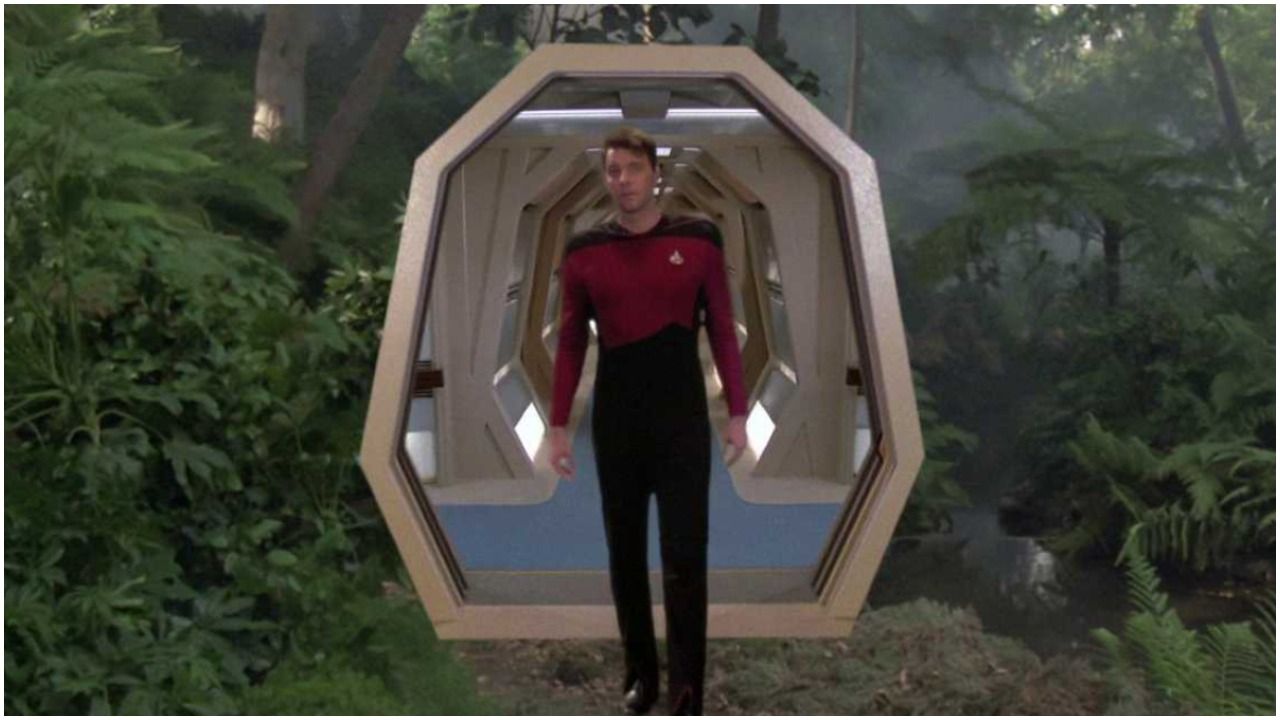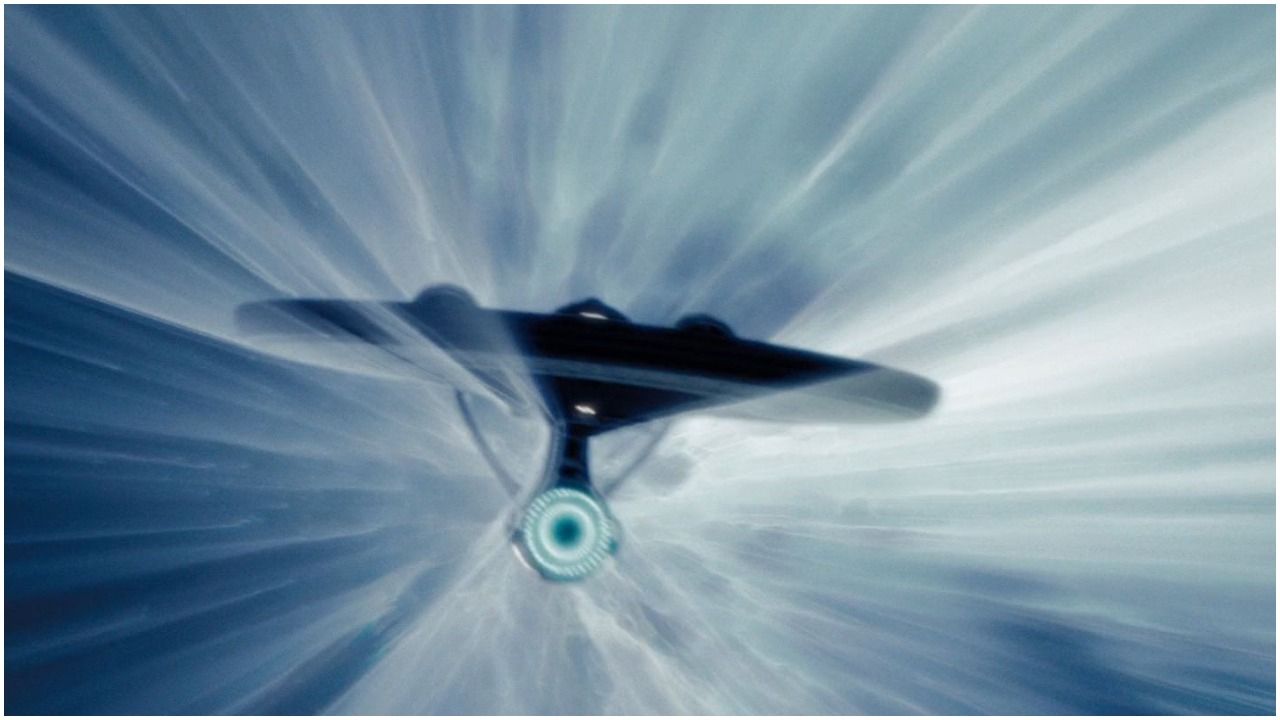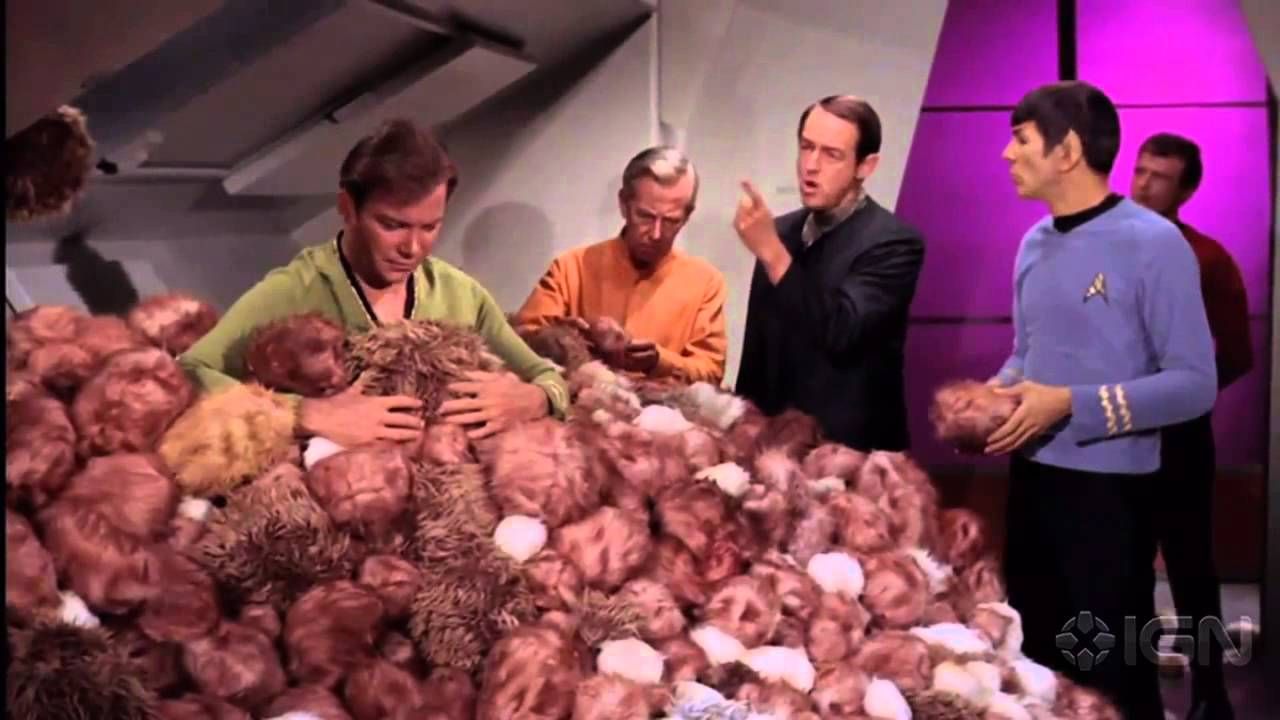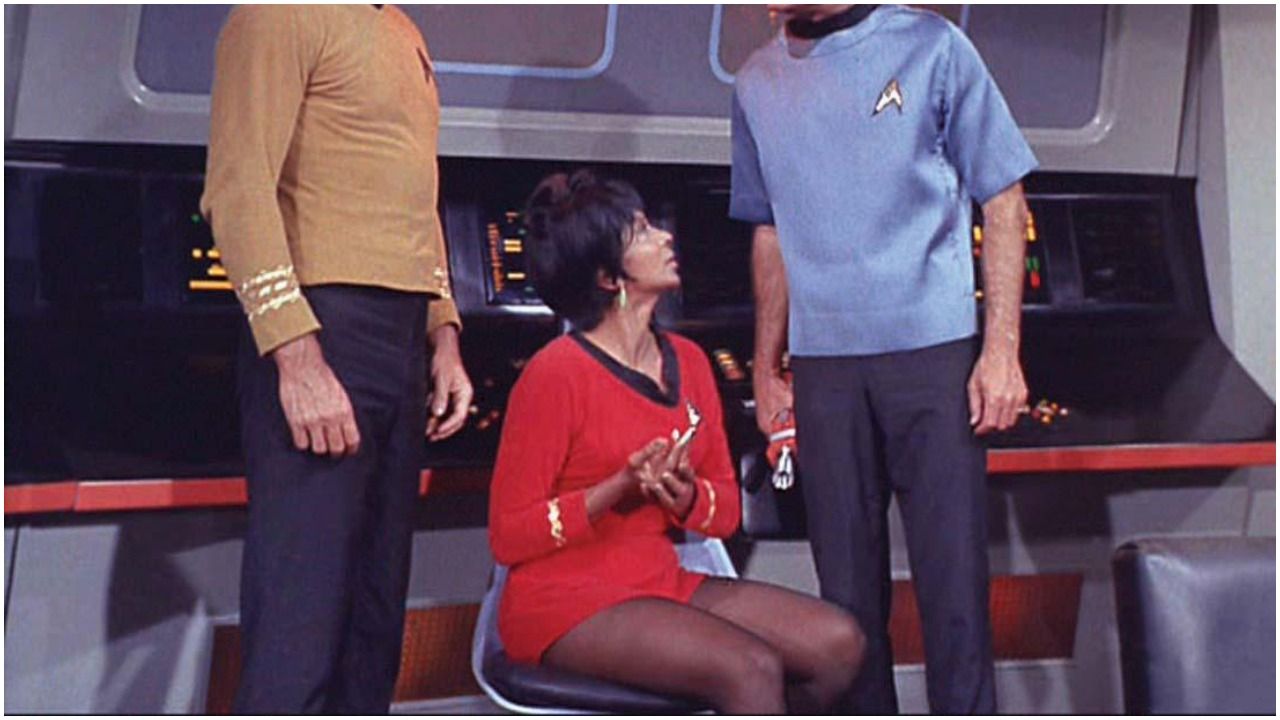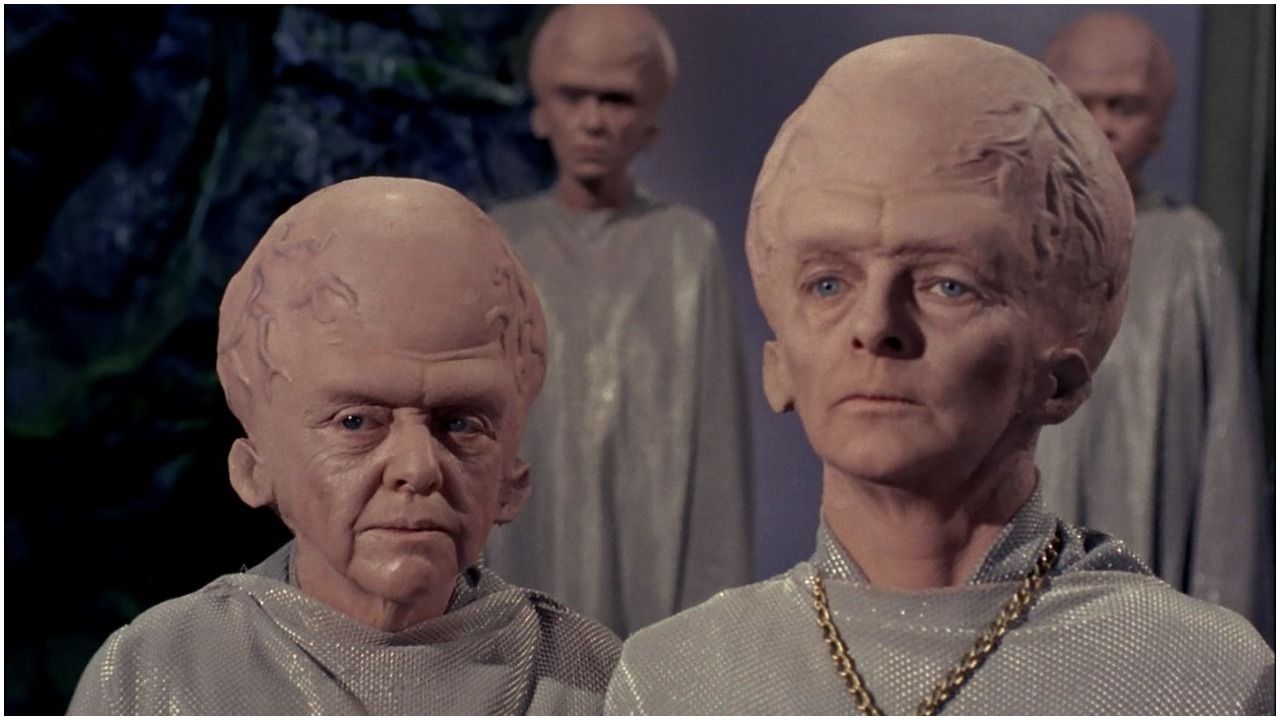Star Trek was not the first science-fiction franchise I ever encountered. (My first is its "rival," and it rhymes with Car Tours.) However, it was the first science-fiction franchise that taught me how to laugh at science fiction. Star Trek was campy and it was fun, and I was glad of every moment that did not take itself seriously. Telepathic meatball monsters, deep conversations with an Abraham Lincoln lookalike, and societies based on Al Capone's gangster lifestyle were just a few bits of the outrageous nonsense I got to enjoy while watching Star Trek.
Despite clearly being a lighthearted science-fiction romp through space, Star Trek garnered some hardcore fans over the years. It might sound like a stereotypical scenario, but I've gotten into fights (intensive discussions) with some of these fans about Star Trek. I'm telling you, some of these avid fans just won't admit that Star Trek has any shortcomings. I try to point out just a couple of these flaws, and they blow a gasket and start defending Kirk, Picard, and Janeway with more fervor than a fire.
What these fans fail to understand is that a person can see what is wrong with a show and still love it to pieces anyway. There are some downright dumb moments in the Star Trek series. But the show has a lot of heart that endears itself to me. Read on if you want to learn about aspects of Star Trek that are just kind of wrong but that we choose to ignore in favor of enjoying the hilarity.
25 Why Do They Survive Everything?
Understandably, the future will probably hold amazing medical advances. So it makes sense that a show rooted in the possibilities of the future would present to us wondrous forms of medicine.
But some of these Star Trek medical procedures really push the limit to what I would call realistic. Crew members have grievous injuries, but through the miracle of futuristic medicine, they survive them. Spock once survived having his entire brain removed from his head.
24 They Could Have Used Seatbelts
The crew of the Enterprise would occasionally be attacked by an enemy ship. Oh, wait, did I say occasionally? I meant frequently. When the ship came under fire, the bridge would shake, and the crew would be tossed around like marbles in a jar. It must have been fun for the actors to just throw themselves onto the floor.
This happened so often, it got me to wondering why they didn't have seat belts for their chairs. Star Trek shows and movies have now started to include seat belts on their command chairs. It's about time.
23 What Could Have Solved All Of Their Problems?
As a Vulcan, Spock has the ability to perform a Mind Meld on other people. The Mind Meld allows him to experience what others have experienced and to show others what he has experienced. In the Star Trek universe, empaths exist as well, displaying similar abilities as Spock's Mind Meld.
Do people realize that these abilities could solve more than half of the problems the Federation faces if they just used them properly? Misunderstandings wouldn't have to occur so frequently if Mind Melds occurred more often.
22 Let's Send A Landing Party
The command crew of a Federation ship is the main cast of characters in a Star Trek movie or show. It makes sense that the series' writers would want us to spend most of our time focusing on them and their adventures. That still doesn't excuse how often members of the command crew compose landing parties.
These landing parties are usually sent on dangerous scouting missions. Why in the world would you send your captain, his second-in-command, the medical officer, and your main engineer on a scouting mission?
21 The Evolution Of The Klingon
The appearance of the Klingons has changed dramatically over time. As any Star Trek fan knows, the Klingons are one of the main adversaries crews of the Federation go up against in the shows and in the movies.
However, despite being a classic alien race in the universe, their looks have not remained the same. In the original Star Trek series, they simply had bronzed skin and imposing eyebrows. Over time, thick ridges were added to their foreheads and their noses were enlarged. Then their hair just kind of disappeared. Everyone just ignores this though.
20 (Non)Lethal Weapon
Where Star Wars has the lightsaber, Star Trek has the phaser. The phaser is a small arms weapon, though the technology that projects the beam of high energy from this small weapon can also be fitted to a starship.
What I've always found silly is the fact that the phaser has different settings. You can set a personal phaser to completely disintegrate an enemy or you can set it to merely stun them. And it's as simple as flicking a switch on the side of the weapon.
19 Blocking Their View
A memorable scene from any Star Trek series is when someone contacts a starship and their image is displayed on the main view screen of whichever starship we happen to be on.
This image completely covers the front window of a starship.
It's handy for audiences to be able to see who a starship captain is talking to in such large detail, but isn't it nonsensical to have a video display completely cover your front view port? What happens if an asteroid hurtles toward the starship when they're in the middle of a video conference call?
18 Struggling With Static Characters
I have gotten completely spoiled by the TV shows of today. I thoroughly enjoy it when my characters undergo change. Take Game of Thrones, for instance. At the beginning, you loathe Jaime Lannister for being an attempted child-slayer. Then bada-bing-bada-boom, you begin to admire him for the tough choices he's made.
Star Trek does not really have that in their TV shows. What you see in the characters in the first episode remains the same to the last episode.
17 We Have No Need For Money Here
Money doesn't exist within the Federation. According to Captain Picard, the accumulation of wealth is no longer something the Federation is concerned with. I'm sorry, but then who is paying for these fancy Federation starships? Is an economy a thing of the past?
There is no way a collective government that monitors and assists numerous planets does not have any form of currency whatsoever. Pardon my French, but that is just bull-turkey.I don't think Star Trek takes place that far in the future.
16 Rinse, Dry, Repeat
Despite having tales that unfold in the vastness of space, the original Star Trek was limited by a small budget and early technology for special effects. As a result, the stories that the crew of the Enterprise experienced often felt recycled. They landed on a strange planet, encountered something unfamiliar, ran into trouble, and then Kirk and his friends saved the day while perhaps losing a couple of Red Shirts.
This happened so often, I'm surprised that the characters themselves could not predict what would happen every time they went on a mission.
15 Try Tricording This
The tricorder is a device used by characters in Star Trek to detect things in the environment, within a person, or inside a starship. Does that sound a little too useful to you too? Dr. McCoy could use his tricorder to detect maladies. Spock could use his to detect elements in the atmosphere of strange planets.
What kind of device is this?! Seems mighty useful to have. Of course, when the crew really needs it to identify something, that's when it always fails to recognize things. (That's when you knew stuff was going to go down in an episode.)
14 Everybody Was Kung Fu Fighting
It is, quite frankly, amazing how quickly people in the Star Trek universe have to resort to physical violence in order to solve their problems. Despite being peaceful envoys of the Federation, starship crews frequently had to fight enemies with their bare fists.
Come on, can you even count how many times Captain Kirk had to wrestle someone to the ground in an impromptu fighting match? I know I can't. My sides would split with restrained laughter every time it happened.
13 Who Can Live Forever?
Even if we dismiss Khan and his magic blood from Star Trek: Into Darkness, there have been multiple episodes in the series that broach the subject of immortality. The crews of different starships have encountered beings who reject the notion of passing away from the world.
Just to be clear, that means the possibility of immortality is alive and well in the Star Trek universe. If such a thing exists and the Federation obtained the secret to giving it to its citizens, I think the universe would get really crowded really fast.
12 On The Job Etiquette
Captain Kirk was always portrayed as a ladies' man. It was rare indeed when an episode of the original Star Trek passed by without him making the moves on some chick he happened to meet that day.
And it wasn't just foreign women that Kirk was magnetically drawn to. More often than not, female members of his crew were also subject to his romantic wiles. It's surprising that the Federation did not receive complaints about Kirk and his constant inappropriate behavior.
11 What Prime Directive?
The Prime Directive of the Federation states that no Federation crew should interfere with the dealings of other civilizations outside of Federation control. It is a fair directive. Or at least it would be, if any Federation crew in the history of ever actually followed it.
Nearly every episode of Star Trek deals with a Federation crew interfering with an alien culture. These crews treat the Prime Directive the same way you would treat a crumpled-up used tissue.
10 The Use Of A Holodeck
Star Trek: The Next Generation properly introduced us to the Holodeck. The Holodeck was a room aboard the starship that functioned as a giant virtual-reality device. Inside, you could simulate different environments that looked and felt real.
As you can probably imagine, this caused a lot of problems with the crew, especially when safety protocols were not in order. The big question, I suppose, is why on earth these safety features would ever not exist in the first place. Too many times have characters fallen prey to Holodeck mishaps because safety was not a priority.
9 Warping To The Future
Faster-than-light travel is one of my favorite aspects of science-fiction stories. I like the different ways that different universes try to solve this issue. Star Wars has hyperdrives, Halo has slipspace drives, and Star Trek has Warp Drives.
Warp is actually one of the aspects of Star Trek that is fascinating in its imagination. But I have slight problems with the concept of subspace bubbles, which was introduced in Star Trek: Voyager. That is basically just teleportation.
8 The Trouble With Too Many Tribbles
The original Star Trek episode "The Trouble with Tribbles" is one of my favorites. In the episode, when some Enterprise crew members decide to bring aboard some cute little tribbles as pets, the most adorable infestation commences.
Tribbles can apparently breed incessantly and rapidly.
They are born pregnant. The tribbles are cute, don't get me wrong. But how can anything be born pregnant? If that's the case, how is it that tribbles had not overrun the universe already?
7 Ultimate Clothing Protection
The purpose of uniforms is to present a sense of solidarity, indicate potential higher ranks, and provide some sort of defense from outside elements. Star Trek crews have uniforms that denote rank and that showcase when a person is a part of the Federation, but I highly doubt these uniforms provide protection, especially for the women.
The short uniform dress that women of the Federation wear does not cover any skin on their legs. If Lieutenant Uhura were to encounter something abrasive while accompanying a landing party, her uniform would be little to no help.
6 Humanoid Aliens
I understand that early Star Trek budgets were tight. Still, too many of the aliens that Federation crews encounter are remarkably similar in physique to human beings.
There is no doubt in my mind that aliens exist in the universe; the universe is that large. But the circumstances in which life evolved on other planets would mean these aliens could look vastly different from how we denizens of Earth look like. If Star Trek were trying to show viewers what potential alien life forms could appear as, they did not stray far from a human template.

